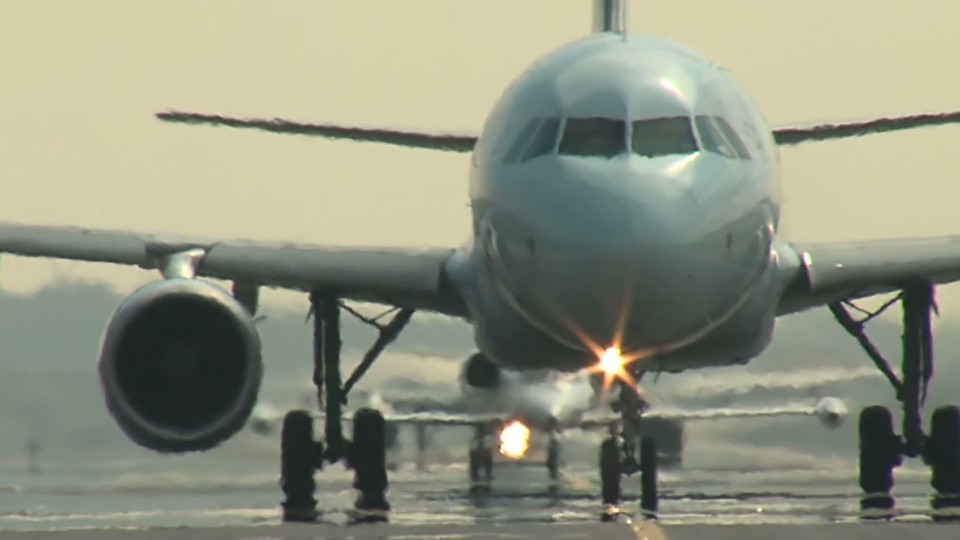Avionics Technicians
Aviation Electrical Technician, Avionics Electronics Technician, Avionics Installer, Avionics Technician
 Select a military branch to see samples.
Select a military branch to see samples.
Advanced Fighter Aircraft Integrated Avionics; Aerospace Propulsion Helper, F100, F119, F135Jet Engines (F-15, F16, F-22 aircraft); Airborne Mission Systems Specialist Craftsman, EC-130H; Airlift/Special Mission Aircraft Maintenance; Avionics Test Station, Components, And Electronic Warfare Systems Helper, Avionics Sensor Systems and ElectronicWarfare Systems; Helicopter/Tiltrotor Aircraft Maintenance Apprentice, MHU-139; Mobility Force Aviator, KC-46 Boom Operator; Refuel/Bomber Aircraft Maintenance Journeyman, KC-10; Special Mission Aviator Craftsman, MC-130J Loadmaster; Special Mission Aviator Senior Enlisted Leader, CV-22 Flight Engineer
AH-64 Armament/Electrical/Avionics Systems Repairer; Air Traffic Control Equipment Repairer; Aircraft Electrician; Aviation Maintenance Technician (Nonrated); Avionic and Survivability Equipment Repairer; CH-47 Helicopter Repairer/Aircrew Member; Electronic Systems Maintenance Warrant Officer; Multiple Launch Rocket System (MLRS) Repairer; RQ-7 Repairer; Senior Electronics Maintenance Warrant Officer
Aviation Engineering Specialty; Avionics Electrical Technician; Electronics Specialty
Air Traffic Control Communications Technician; Aircraft Avionics Technician, CH-53; Aircraft Communications/Navigation/Radar System Technician, EA-6; Aircraft Electrical/Instrument/Flight Control Systems Technician, IMA; Aircraft Maintenance Chief; Aviation Precision Measurement Equipment (PME) Calibration/Repair Technician, IMA; Blackjack (MQ-21) Specialist; Fixed-Wing Aircraft Mechanic, AV-8/TAV-8; Helicopter Mechanic, CH-53; Small Unmanned Aircraft System (SUAS) Operator
A/F 37T-21 Aircraft Engine Components Test Stand; Aircraft Organizational Maintenance Officer, Avionics/Weapons Division; Aviation Electronics Technician; C-2A Systems Organizational Maintenance Technician; Consolidated Automated Support System (CASS) Family of Testers (FoT) Common Configurations Operator; E-6 System Organizational Career Maintenance Technician; F/A-18 A/B/C/D Systems Organizational Initial Maintenance Technician; Master Chief Avionics Maintenance Technician; MH60R/S Electrical Systems Organizational Initial Maintenance Technician; P-8A Aircraft Systems Organizational Initial Maintenance Technician
Advanced Fighter Aircraft Integrated Avionics; Advanced Fighter Aircraft Integrated Avionics Craftsman; Advanced Fighter Aircraft Integrated Avionics Journeyman, F-35; Avionics Test Station, Components, And Electronic Warfare Systems Apprentice, Avionics Sensor Systems and ElectronicWarfare Systems; Avionics Test Station, Components, And Electronic Warfare Systems Helper, B-1/E-8/F-15 Avionics Systems; Fighter Aircraft Integrated Avionics Apprentice, F-15 Avionics; Fighter Aircraft Integrated Avionics Helper, F-16 Avionics; Heavy Aircraft Integrated Avionics Apprentice; Heavy Aircraft Integrated Avionics Journeyman, C4ISR Mission Systems (E-3, E-4, E-7, EC-130H, RC-135, VC-25); Tactical Aircraft Maintenance
What they do:
Install, inspect, test, adjust, or repair avionics equipment, such as radar, radio, navigation, and missile control systems in aircraft or space vehicles.
On the job, you would:
- Test and troubleshoot instruments, components, and assemblies, using circuit testers, oscilloscopes, or voltmeters.
- Keep records of maintenance and repair work.
- Adjust, repair, or replace malfunctioning components or assemblies, using hand tools or soldering irons.
Knowledge
Engineering and Technology
- computers and electronics
- mechanical
Arts and Humanities
- English language
Business
- customer service
Communications
- telecommunications
Skills
Basic Skills
- thinking about the pros and cons of different ways to solve a problem
- listening to others, not interrupting, and asking good questions
Problem Solving
- noticing a problem and figuring out the best way to solve it
People and Technology Systems
- thinking about the pros and cons of different options and picking the best one
- figuring out how a system should work and how changes in the future will affect it
Abilities
Verbal
- read and understand what is written
- listen and understand what people say
Hand and Finger Use
- put together small parts with your fingers
- keep your arm or hand steady
Ideas and Logic
- notice when problems happen
- order or arrange things
Personality
People interested in this work like activities that include practical, hands-on problems and solutions.
They do well at jobs that need:
- Cautiousness
- Integrity
- Attention to Detail
- Dependability
- Intellectual Curiosity
- Perseverance
Technology
You might use software like this on the job:
Enterprise resource planning ERP software
- SAP software
- Workday software
Presentation software
- Microsoft PowerPoint
Operating system software
- Linux
- UNIX
Education
Education: (rated 3 of 5)
certificate after high school or
high school diploma/GED
usually needed
high school diploma/GED
usually needed
Job Outlook
Bright
New job opportunities are very likely in the future.
Explore More
- Aerospace Engineering & Operations Technologists & Technicians
- Aircraft Mechanics & Service Technicians
- Aircraft Structure, Surfaces, Rigging, & Systems Assemblers
- Electrical & Electronics Repairers, Commercial & Industrial Equipment
- Electro-Mechanical & Mechatronics Technologists & Technicians
You might like a career in one of these industries:
See more details at O*NET OnLine about Avionics Technicians.





